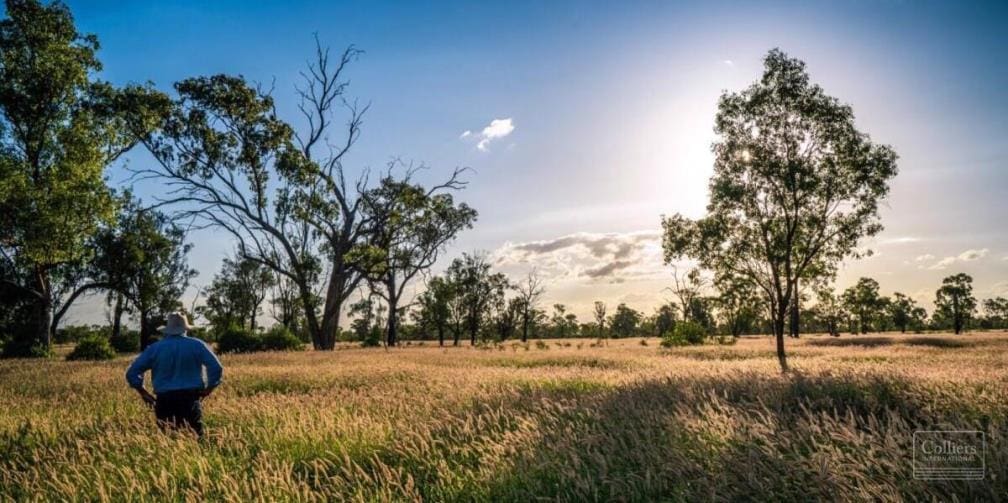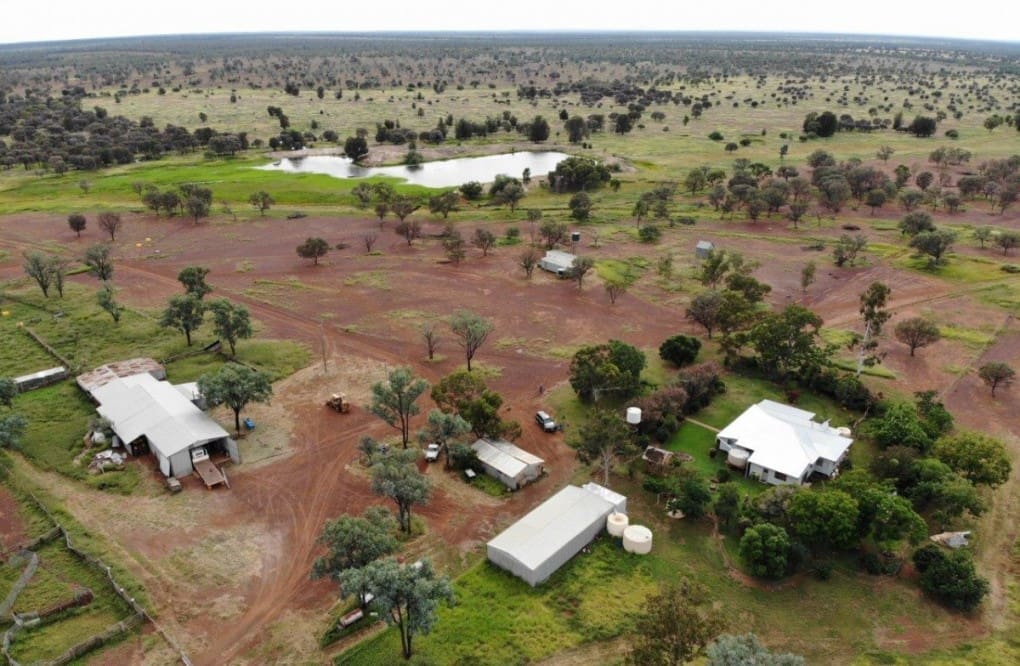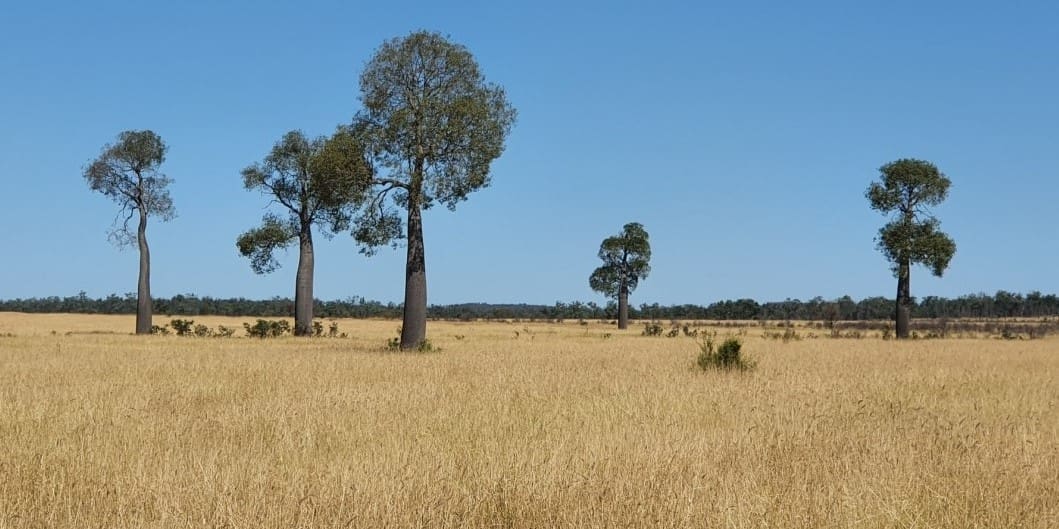
There’s been a high level of interest in 4458ha New Cashmere, near St George – one of 18 southern Queensland grazing properties of significant size currently on the market
The rural property market in southern parts of Queensland is witnessing a sharp increase in the number of listings on the back of much-needed February/March rain. This week, several regional property experts give their thoughts on the rise in listings that’s occurred…
Toowoomba-based Herron Todd White valuer Stephen Cameron said what the market was currently experiencing was basically the result of rain.
Previous drought events had clearly shown that there was inevitably a distinct rise in listings following rain.
Mr Cameron said the current climate might be a key to some decision-making.
“The rural industry is still positive with plenty of confidence and to date, there are no real indicators to suggest otherwise. However, nobody knows what the future holds and what the potential flow on effects of COVID-19 will be,” he said.
Vendors who were taking the opportunity to sell their assets now were doing so under superior marketing conditions.
“There is the possibility that one further background consideration given to selling an asset is the potential uncertainty of the world economy surrounding COVID-19. However, for those considering selling, now is a good time while there is strong global demand for beef.”
Roma-based selling agent Carl Warren from TopX Australia has noticed an increase in property listings in southern Queensland over the past month.
“The market is buoyant, given current low interest rates, a good body of feed, a slowly improving COVID-19 situation in Australia and the cattle market has found its feet again,” Mr Warren said.
He believes improved seasonal conditions have given producers the confidence to present their properties to the market for the first time in five to seven years.
“Many are selling out to upscale (to grow their current portfolio), while others are seeking grass. Unfortunately, the current COVID restrictions are making it difficult for serious interstate buyers to inspect,” he said.
Phillip Kelly from Colliers International said the influence of rain across southern Queensland earlier this year had triggered people, who had been positioning themselves to sell, to start marketing their properties.
He said any assets that have been listed were being met with solid demand from a broad base of potential buyers. These currently included:
- Producers who have been squeezed-out of their original production areas (in southern New South Wales and Victoria, for example) looking for scale
- Supply chain operators who operate breeding country seeking backgrounding depots
- Cashed-up producers wanting development opportunities (to increase productivity)
- Existing landholders wishing to simply expand
- Investors with a rural or farming background who have left the industry but are seeking alternate investments.
Mr Kelly said producers from South Australia, Victoria, New South Wales and the Northern Territory were looking for opportunities to expand, with enterprises offering some diversity and risk management high on the agenda.
“As an example, inquiry for our listing, the 4458ha Maranoa property New Cashmere has been extraordinary,” he said.
Located 25km from St George, the well-located irrigation, grain and grazing property (pictured top of page) with a backgrounding and feedlot opportunity was listed for sale last year with a $4.95m price tag. Last month, Colliers International took over the marketing of New Cashmere, launching an expressions of interest campaign closing on Monday.
However, Mr Kelly warned that purchasers were becoming more discerning.
“Buyers know what they are looking for and are conducting a deeper due diligence process. So, even though inquiry might be strong, an asset might fall out of their target zone, once they inspect it and conduct early stage due diligence.”
Mr Warren reports good inquiry and repeat inspections for two of his listings, Oakwood and Greenoaks.
Oakwood comprises 1392ha of fattening or breeding country at Wallumbilla, 70km from Roma.
The 5099ha backgrounding property Greenoaks is situated 65km south west of Mitchell and 150km to Roma. Boasting an abundance of feed, the property is suited to beef, sheep, wool or goat production.
“Most of the interest has been local, and from central or western Queensland, with some from South Australia and New South Wales. Breeder country is keenly sought because breeder numbers are low and producers realise values will rise over the next four or five years,” Mr Warren said.

The 5100ha backgrounding property Greenoaks is situated 65km south west of Mitchell and 150km from Roma. Boasting an abundance of feed, the property is suited to beef, sheep, wool or goat production.
HTW’s Stephen Cameron said most of the recent southern Queensland transactions that have recently taken place were local or state purchasers.
“There are mum and dad investors seeking expansion, as well as near neighbour acquisitions. It is still a similar market demographic seeking country (pre the rain) that are now taking the opportunity to purchase,” he said.
Mr Cameron said the season was creating a positive market environment.
“Producers can now walk onto a property and generate cash flow through grassed-up assets, rather than acquiring an interest debt, as seen pre-rain.”
“COVID-19 hasn’t changed the demand – there is still some interest over the borders – it has just changed the logistics for agents to maintain social distancing requirements,” Mr Cameron said.
Values
Mr Cameron said there had been some recent sales that indicated values are still holding strongly, but others that sat in line with where the market was three to six months ago.
A sale that surprised some parties last week was the 377ha Jimbour Plain (dress circle Darling Downs cropping country) cultivation property Oban that sold for $4.705 million or $12,599/ha via online auction.
In November last year, the Maranoa’s 1876ha Bracco, 13km from Roma, sold for $6.15 million or $3278/ha. It last changed hands in September 2016 for $4.575m or $2438/ha, reflecting a 34 percent increase in three years.
Mr Cameron said grazing values remained at the stronger end of the market range, but not necessarily creating a new benchmark precept.
“The increased market supply will likely counteract the demand and probably flatten values.”
Neighbours paying premiums
However, he said neighbouring properties would continue to attract a premium.
“Adjoining landholders benefit from creating economies of scale, such as not having to operate separate plant and equipment. Also, the opportunity to buy neighbouring properties does not always present itself. It is sometimes a once in a generation opportunity.”
Phillip Kelly agreed.
“When you get two neighbours or a limited specific type of country in a particular area, it can create its own market, and then higher prices may be paid,” he said.
However Mr Kelly is not expecting any significant price increases across southern Queensland.
“There is a reserved approach with COVID-19, and even though people remain positive, there is still a question mark on global markets and whether economic slowdown will affect beef and grain markets.”
He said some producers were confidently listing their properties, but others were choosing to sit on the fence for the time being.
“With record low interest rates, sound commodity markets and good quality assets being presented to the market, now is a good time to be investing in agricultural land,” he said.
Mr Warren said property values around Roma were sitting at new levels following the drought, and may be driven by cattle values.
“Despite the increased listings, values will hold. They rarely fall. More listings will give buyers more choice, but there are definitely more buyers at present than there are sellers.”
Around 25 grazing properties of significant size in southern Queensland have been listed for sale on Beef Central’s property pages in 2020 – and it is by no means a definitive list, as other properties have sold in off-market deals.
There are currently 18 listed for sale in the region:
- 15,990ha Terrica Aggregation, Stanthorpe
- 19,743ha Lulworth Station, Cunnamulla
- 14,357ha Whyenbirra, Bollon
- 9424ha Boondarra, Roma
- 16,504ha Abbadoah, Cunnamulla
- 1392ha Oakwood, Wallumbilla/Roma
- 2355ha Kurrajong, Dalby
- 7654ha Murilla, Roma
- 2070ha Bangor South, Mungallala
- 27,701ha Tomoo, Mitchell
- 2678ha Mundibulanga Aggregation, Drillham
- 4462ha New Cashmere, St George
- 6808ha Brooklyn Aggregation, Warwick/Toowoomba
- 5099ha Glenoaks, Mitchell
- 3384ha Forest Grove, Wallumbilla
- 3902ha Glenochar, Roma
- 49,197ha Devine Oratara Pastoral Property Portfolio, Dirranbandi
To date, eight have sold:
- 2131ha Cooraki, Surat – $3.85m or $1806/ha
- 2674ha Bellevue, Dalby – $1.89m or $706/ha
- 13,380ha Bonus Downs, Roma – price undisclosed
- 8147ha Mt Lonsdale, Mungallala – $8m-$10m or $982/ha-$1224/ha
- 1454ha Croydon, Roma – $3.54m or $2434/ha
- 1543ha Iona, Wallumbilla – $6.4m or $4147/ha
- 20,025ha Gladys Downs, Augathella – $20m or $998/ha
- 789ha Bollier Park, Mary Valley – price not disclosed

